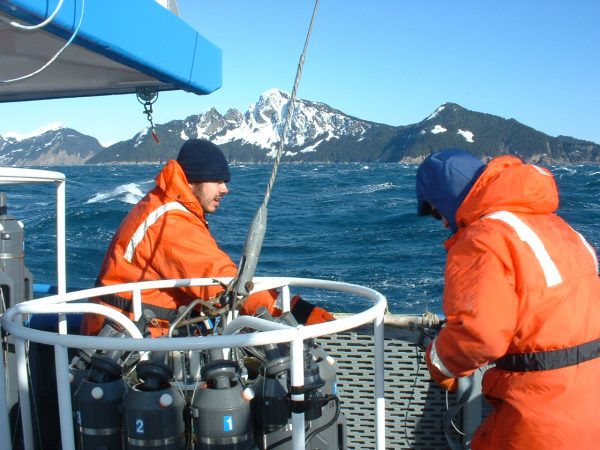Long-term site status will boost Gulf of Alaska studies
March 1, 2017
Lauren Frisch
907-474-5350

A 20-year effort by University of Alaska Fairbanks researchers to monitor the northern Gulf of Alaska's animals and environmental markers will soon expand.
The National Science Foundation has designated the northern gulf as a Long-Term Ecological Research site and will provide grant money for future science in the area. It is one of two new LTER sites. Each will receive $5.6 million in funding over five years.
Since 1997, UAF College of Fisheries and Ocean Sciences researchers have striven to understand the processes that support the region's thriving fish, crab, seabird and marine mammal populations. Every May and September, the researchers travel by boat along the Seward Line, a route from Resurrection Bay's mouth across the continental shelf to a point 170 miles offshore. They map the species encountered and measure ocean nutrients, temperature and salinity.
“We have monitored the shelf and Prince William Sound long enough to know where the interesting features are,” said Russ Hopcroft, a CFOS professor and the principal investigator for the new LTER project. “But, until now, we haven’t had the funds to actually dig deeper and learn more about some of the processes and mechanisms behind what we have been observing.”
The funding provided by the new LTER grant will allow the researchers to continue to monitor core ocean parameters across a greater geographic region, add new measurement types and include an additional expedition each July. This will help the researchers better understand what regulates this highly productive ecosystem that supports part of the nation’s largest fishery.
Hopcroft will work with CFOS professors Seth Danielson, Ana Aguilar-Islas and Andrew McDonnell, in collaboration with other scientists at UAF, Western Washington University, Oregon State University and the University of California Santa Cruz.
LTER sites are intended to be funded over the long term. The program is designed so researchers can study and compare distinct ecosystems in order to generate and test fundamental ecological theories. New sites are chosen in ecosystems that are not yet represented in the program and usually tend to be established in places where researchers have a proven track record of collecting meaningful data.
“We feel very lucky to have this opportunity,” Hopcroft said. “It’s a great culmination of our efforts to keep the Seward Line observation program going and demonstrate its importance.”
There are 25 previously established LTER sites, including two in Alaska at Bonanza Creek and Toolik Lake.
The Seward Line program began as part of the U.S. Global Ocean Ecosystem Dynamics program, jointly funded by the NSF and the National Oceanic and Atmospheric Administration. Over the past two decades, it has received additional support from the North Pacific Research Board, the Alaska Ocean Observing System and the Exxon Valdez Oil Spill Trustee Council.


